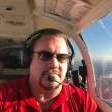Unexpected Icing
-
Members Online
- catchman86
- Hank
- Shiroyuki
- Skates97
- MarquezJC
- TCC
- Niko182
- thomas1142
- ottorecker
- natdm
- bluehighwayflyer
- ad5ut
- Paul Thomas
- DRH4249
- hubcap
- Scooter
- Ragsf15e
- GeeBee
- FlySafe
- Denise
- Fritz1
- Aerodon
- aviatoreb
- ElkoRandy20J
- AlphaUniform
- 1980Mooney
- Yan X
- Flyler
- laytonl
- 201Mooniac
- 1967 427
- EKoS
- MaxwellSmart86
- N201MKTurbo
- DXB
- Fly Boomer
- redbaron1982
- Falcon Man


Recommended Posts
Join the conversation
You can post now and register later. If you have an account, sign in now to post with your account.